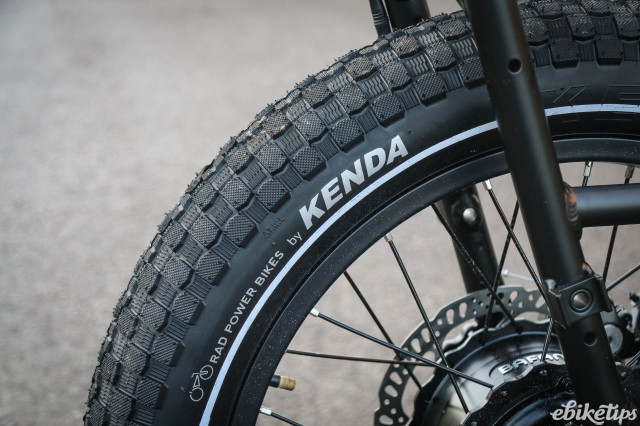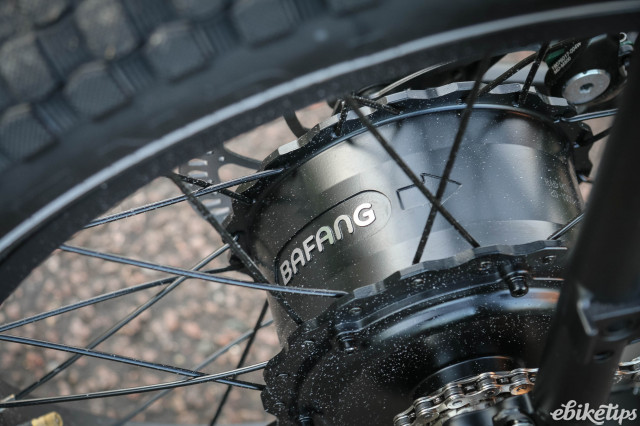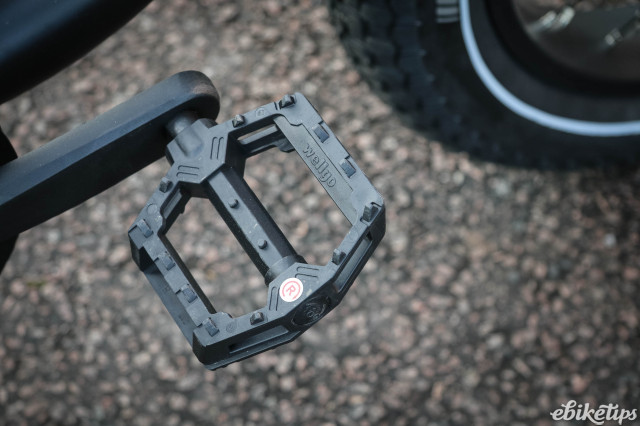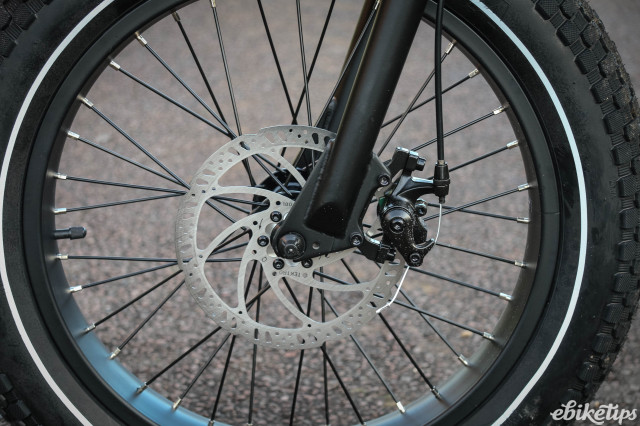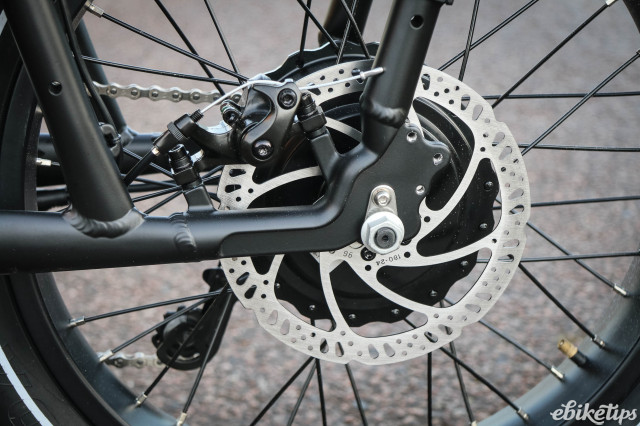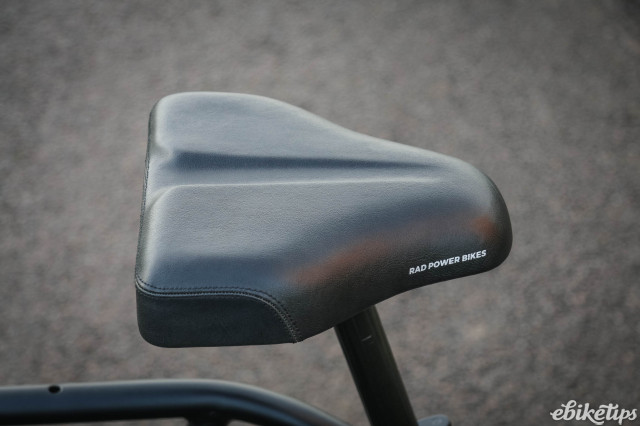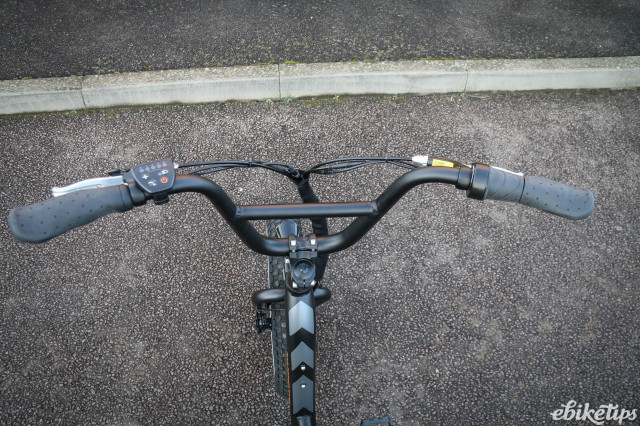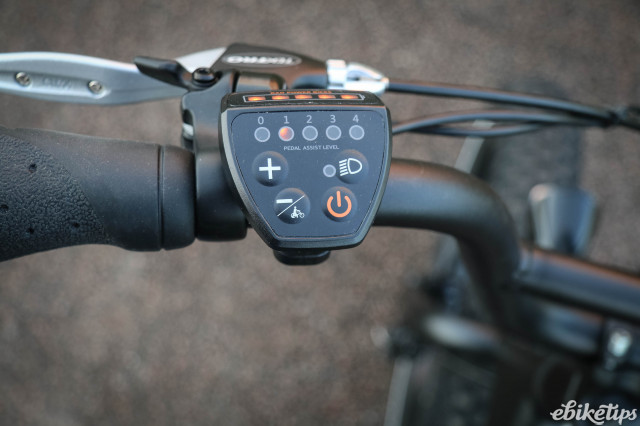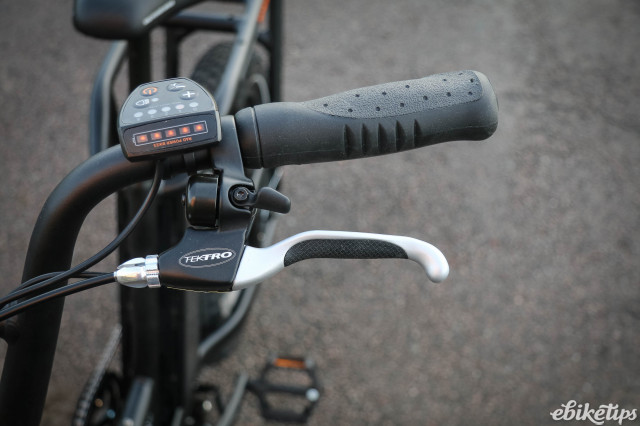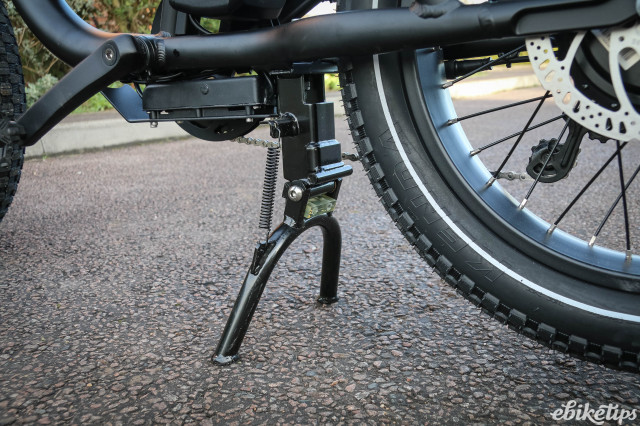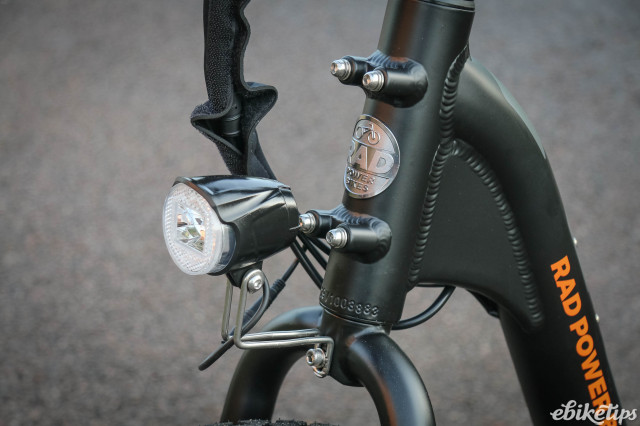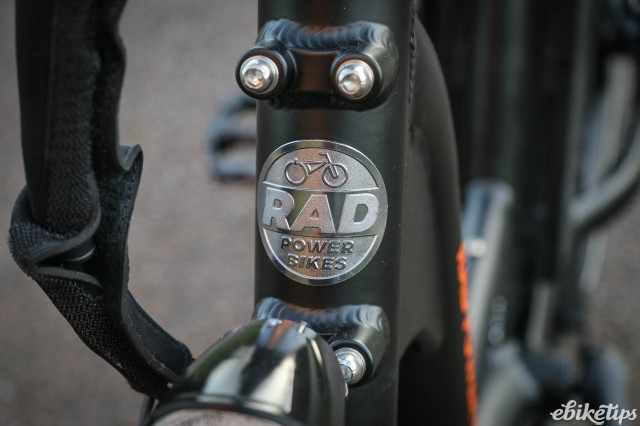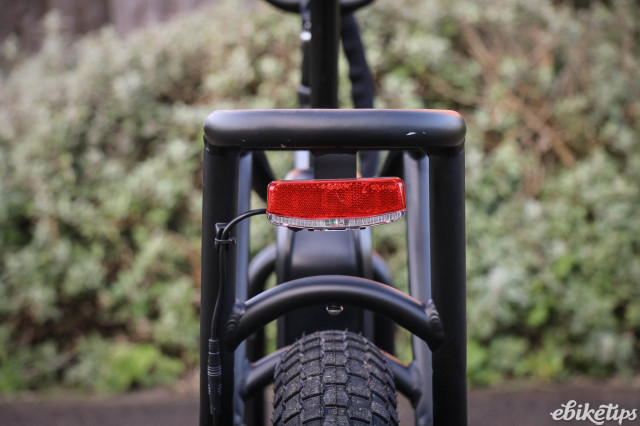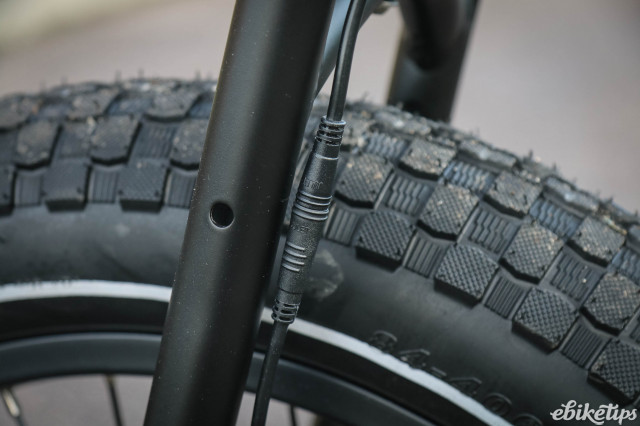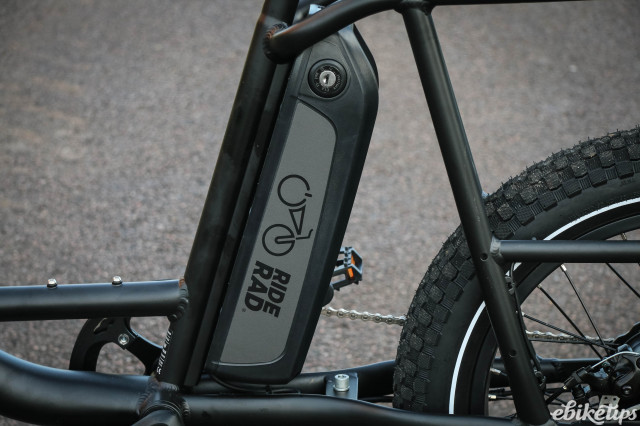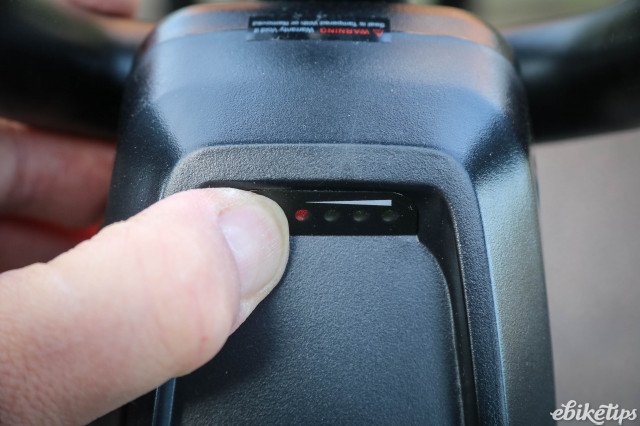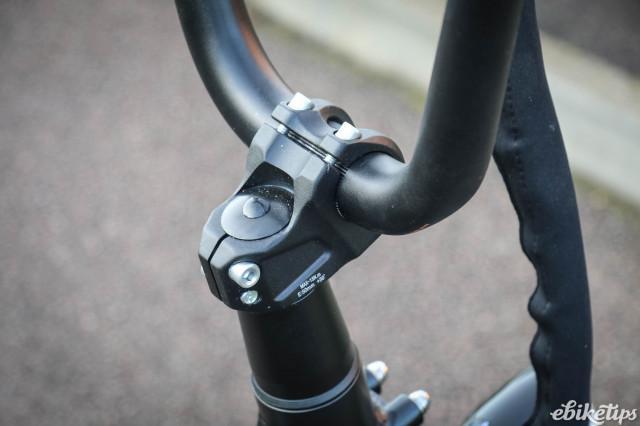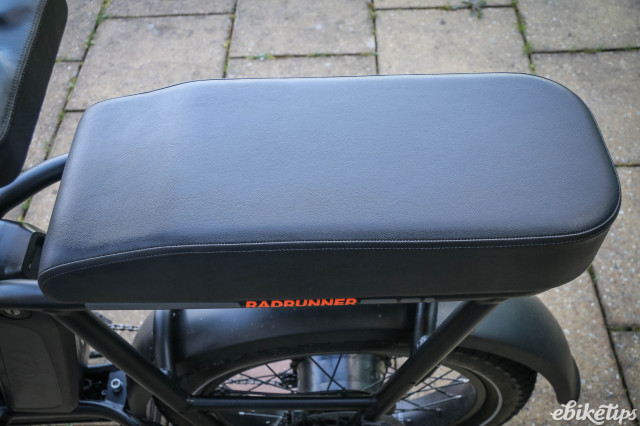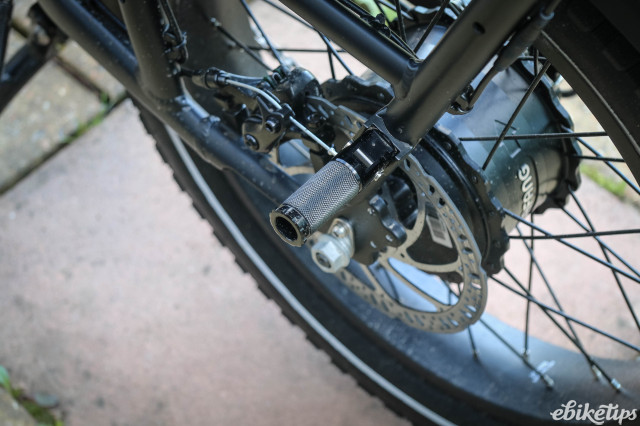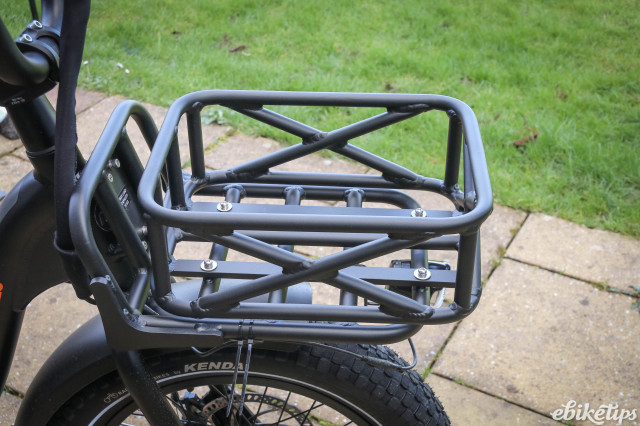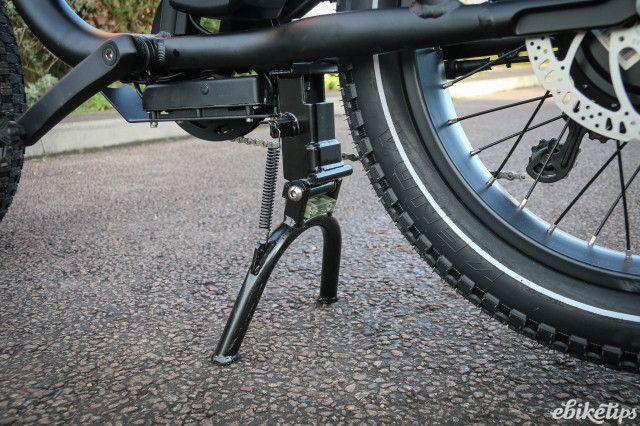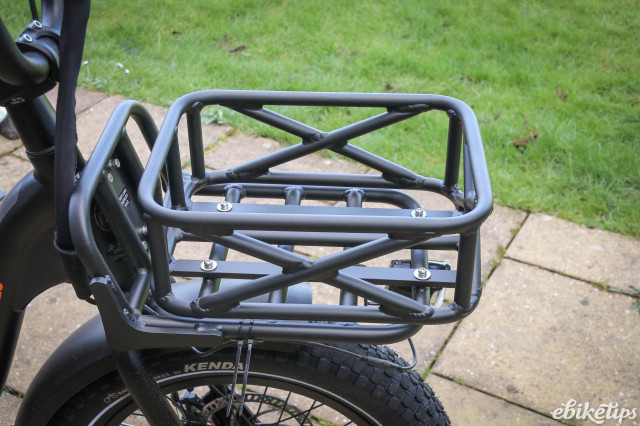Rad Power Bikes RadRunner
Overview
- Excellent price
- Lots of oomph for cargo, passengers and hills
- Versatile thanks to accessory range
- Chain isn’t well protected
- Awful saddle
- Cheap pedals
The Rad Power Bikes RadRunner is a massively practical utility ebike at a very good price that also manages to be lots of fun. It has a couple of flaws you’ll want to fix straight away, but it’s such good value for money that they’re not dealbreakers.
What we have here is a welded aluminium step-through frame with a built-in rear rack capable of carrying up to 54.4 kg (120lb in old money; Rad Power Bikes is American), propelled by a 48V Bafang rear-hub motor with a 672 Wh battery. It rolls on really fat 20inch tyres; at 3.3 inches across they look more like moped tyres than bicycle tyres, and make you feel like you can conquer anything in your path. The tall BMX-style handlebar gives a very upright, commanding ride position that’s perfect for city streets and with the none-more-black paint job you’ve a distinct air of a bike that means business.
Other standard features of the RadRunner are pretty much what you’d expect of a bike that sits somewhere between a round-town utility and a mini cargo bike. There’s built-in lighting front and rear, and the rear incorporates a brake light, which is arguably unnecessary on a bicycle, but it’s so easy to do on an ebike that you might as well have it.
To park the RadRunner there’s a sturdy centre stand that keeps it stable while you load it up, though the bike’s considerable heft does require a firm hoik to get it up onto the stand.
Rad Power sells its bikes direct to customers, which is part of the reason it’s able to offer the RadRunner for just £1,199. The parent company is based in Seattle, but there’s a European outpost in Utrecht and that’s where UK Rad Power bikes ship from. That does mean there’s some assembly necessary to get you under way.
The RadRunner comes in a big box with lots and lots of packaging. Removing the extensive protection for the parts and paintwork is the most time-consuming part of assembling the bike. Once that’s done, you put the bike on its centre stand, fit the handlebar, pedals, front wheel and front light and inflate the tyres to 30psi. Rad Power supplies a small toolkit with the bike that contains everything you need to get started except for a tyre pump and grease, though they recommend you use a torque wrench for the handlebar stem bolts.
It’s all very straightforward. The plug-in connectors for the electrics are a nice touch, making it easy to fit the front light or, if you need to, to drop out the rear wheel.
So charge the battery and away we go.
Wahey! Here we go!
Step aboard the RadRunner, whack the assist straight up to maximum and as you turn the pedals you’re immediately slammed along by that 48V motor and its 80Nm of torque. The RadRunner’s acceleration is almost brutal; you can’t actually pull a wheelie by just starting off, but it damn well feels like you could, and if that first moment doesn’t put a huge grin on your face, you need a new joy gland.
The practical upshot of this is that in the highest of the RadRunner’s four power levels you’re up to 15.5mph really quickly, which is confidence-inspiring for getting away from the lights and out of junctions. When you reach the assist limit the cut-out is a bit abrupt; it sometimes feels like it’s just stopped for no reason, then you check your speed and realise why.
The RadRunner’s handling is friendly and flawless. It’s eminently stable coasting down hills at 30mph, with those huge tyres providing massive amounts of grip on Tarmac and trails alike. Speaking of the tyres, they’re 20-inch by 3.3-inch, made by Kenda for Rad Power and as far as we can make out they’re the fattest 20-inch tyres anyone makes. They include Kenda's K-Shield puncture-resistant tyre liner which has kept us puncture-free for the duration of the test.
Nevertheless, it’d be nice to have a version with smoother tread for road riding. The bike nerd in me looks at those knobs and knows they’re wasting power in tread squirm; slicks would extend the range a shade.
The power levels are indicated and chosen by a straightforward control unit next to the left-hand grip, which also turns on the lights. A twist-grip throttle on the right hand side controls the walk-assist function which runs at a distinctly brisk 6km/h.
Claimed range is 55-88km (34-55 miles) which is about right if you’re between sensible and very careful with the level of power assist. The RadRunner served excellently as a commuting bike and runaround for my partner’s eldest who got about 25 miles out of it on full assist before managing to strand herself in town and phone home pleading to be rescued. Oops.
More judicious use of the assist at levels 2, 3 and 4 (sparingly) gave a range of over 35 miles with one LED of five still lit to indicate remaining charge. That suggests 55 miles is just about doable using only the lowest level of assist and on entirely flat roads.
If you plan to transport the RadRunner by car you’ll need a sturdy rack to handle its heft (over 30kg with accessories) and – if your rack manufacturer offers them – extra long straps to go round the tyres. A ramp would be handy too.
One tester said that having two adjacent banks of LEDs to indicate charge and assist level was a bit confusing. A €99 option gets you an LCD screen that better separates assist mode and battery level displays and shows speed and power levels as well.
Everyone who used the RadRunner wished for a bit more protection from the chain than the minimal chainring guard fitted. Nobody likes an oil mark on their trouser cuffs.
Bike stuff
There’s no gear shifting to worry about on the RadRunner. You get one ratio, 48 x 16, yielding a gear of about 68 inches with those fat tyres. That’s spot-on for general riding, but if you go past the assist’s cut-off speed on a descent you find your legs flailing around if you try and keep up with the bike over about 20mph.
That inner bike nerd I mentioned before looked at the brakes on the RadRunner and thought “mm, cable discs, bet I’m going to hanker after hydraulics pretty soon”. That inner nerd was wrong. The Tektro Aries brakes bring the RadRunner firmly and authoritatively to a halt because they’re working on 180mm rotors on 20-inch wheels and that combination gives the brakes plenty of extra oomph. To get the same mechanical advantage on a 700C wheel with 40mm tyres you’d need rotors about 220mm across.
A personal thing, but I found the RadRunner’s riding position too upright, and cramped with the bar too close to the saddle. I slung on a 120mm stem I had kicking around and put the stem under the tall spacer on the steerer and ended up with a position a bit more forward, which suited me better. However, testers who are more used to ‘Dutch bike’ type riding positions liked the RadRunner’s stance.
Sitting uncomfortably
The RadRunner’s biggest flaw is the saddle, which is a piece of absolute rubbish you’ll want to bin straight away. The saddle base and seatpost are one welded piece. That means no saddle rails to suspend your bum and, because the base is just a vaguely saddle-shaped flat steel sheet, no conformation to the details of human anatomy. It’s quite simply very uncomfortable after more than a few minutes; its shape and lack of give makes pedalling painful.
Fortunately a wide saddle suitable for the RadRunner’s upright position and a suitable 27.2mm seatpost (a very common size) will cost you about £40, so given the RadRunner’s excellent base price it’s not a dealbreaker. After riding it enough to be certain it really was dire and I wasn’t going to get used to it I replaced the saddle and seatpost with something far more sensible.
A much more minor gripe is that the pedals are cheap plastic units that don’t feel at all durable. They started to develop movement in the bearings after just a few rides. Do yourself a favour and fit DMR V8s or similar mountain bike pedals with grippy pins that’ll grab your shoes when it’s wet.
Accessories
Rad Power offers a huge range of accessories to fit the RadRunner and their other bikes. We were sent a few with the bike, so let’s take a look.
Mudguards: I think mudguards should be original equipment on a utility bike, not a €79 optional extra, but at least these moulded PVC guards are well executed and wrap thoroughly around those mahoosive tyres. You’ve got to get the rear wheel out to fit them, which is all a bit of a faff. Since the RadRunner ships 90% assembled it would make a sense for them to be fitted at the factory rather than expecting the customer to do it.
Passenger Package: After the mudguards, this is the must-have RadRunner accessory if there’s any chance you’re going to want to transport kids or even young adults on the RadRunner. The kit comprises a padded seat that bolts on the rear rack, footpegs, and a clear protective wheel skirt to keep stray clothes and body parts out of the wheel.
The RadRunner’s principal passenger has been Ella, my partner’s 15-year-old, with her mum or older sister at the helm. Ella says it’s “really fun” on the back of the RadRunner though she’d like some sort of handlebar rather than having to hold on to the rider.
With a passenger on board the RadRunner does need a bit of help on steep inclines, but it on normal road hills and the flat it’s almost entirely unfazed by the extra load. One of the cycleways into Cambridge includes a railway overbridge with short ramps that are about 30% grade. The RadRunner benefits there from a bit of rider oomph to get it up.
Ballard Cargo Bags: A pair of these huge panniers is big enough to swallow a week’s shopping. They hang from the built-in rear rack with three hooks, with a fourth on the body to grab an upright and stop it from swaying. However, at 50cm from end to end they’re so long it’s hard to get them far enough back on the rack to clear your ankles. They’re really intended for Rad Power’s longtail model, the Radwagon; it’s a shame Rad Power hasn’t tweaked them or the RadRunner so they work together better.
Front Rack and Small Basket: The rack bolts to the head tube and the basket bolts to the rack, providing you with a spot for a bag or other gear, as long as it comes to less than 10kg. Because it’s mounted on the frame the rack doesn’t move when you steer, so it has no effect on the bike’s handling. If you’re used to fork- or handlebar-mounted front racks and bags, it’s a bit disconcerting at first.
One accessory I wish I’d asked for is the Large Platform and Small Insulated Delivery Bag. With those, the RadRunner would be very handy for nipping out for pizza. My nearest Domino’s is 10 minutes away by bike so it’s crazy to drive there, except that a large Vegi Volcano does far better on the passenger seat than bungee-corded to a bike rack. With a bigger bag, the size of, say, a Deliveroo rucksack, the RadRunner would be a solid choice for a food delivery bike too.
Overall
The Rad Power RadRunner has a heck of a lot going for it. It’s a great commuter. It’s quick away from the lights, tough as Fermat’s Last Theorem, nimble and lots of fun. The accessory range, and the thoughtful provision for mounting a front rack and platform, bags or a passenger seat make it really versatile too. It’s become our family’s main errand-runner and commuter, especially when both teenagers want to nip into town together and their mum has better things to do than play cabbie.
That means buying a RadRunner isn’t just buying a bike, it’s buying into a system that means you can configure the bike differently for whatever task or tasks you need. Of course, you can do that with a regular bike too – adding third-party racks and so on – but the integration of Rad Power’s accessories dials the idea up to 11.
And then there’s the excellent value for money on offer here. Most conceptually similar bikes start from three grand; the RadRunner will set you back £1,300 to £1,500 or so with various sensible selections of accessories. You might not get a posh mid-motor drive for your money with Rad Power, but it’s an excellent price for what you do get.
Despite the flawed saddle and cheap pedals, this is a bike I’d happily spend my own money on.

